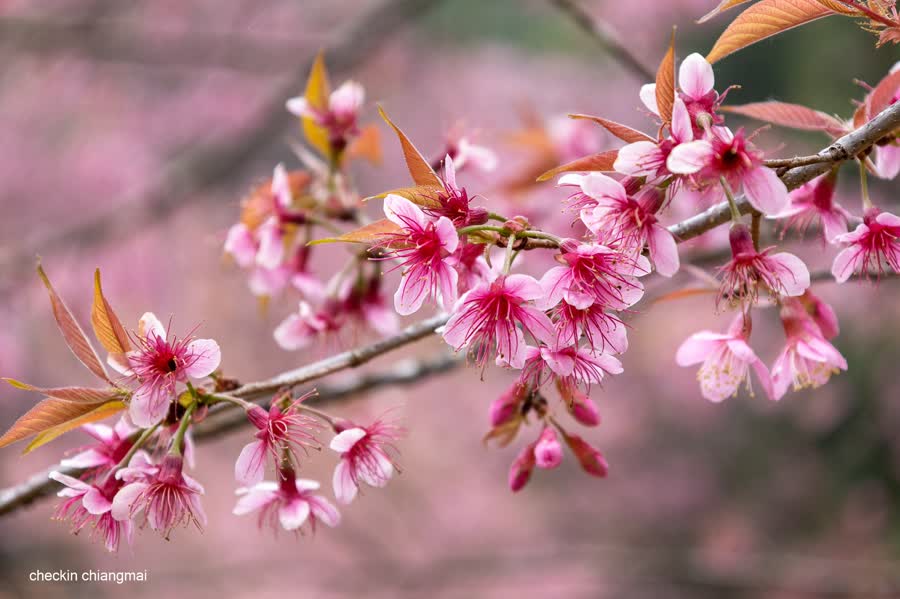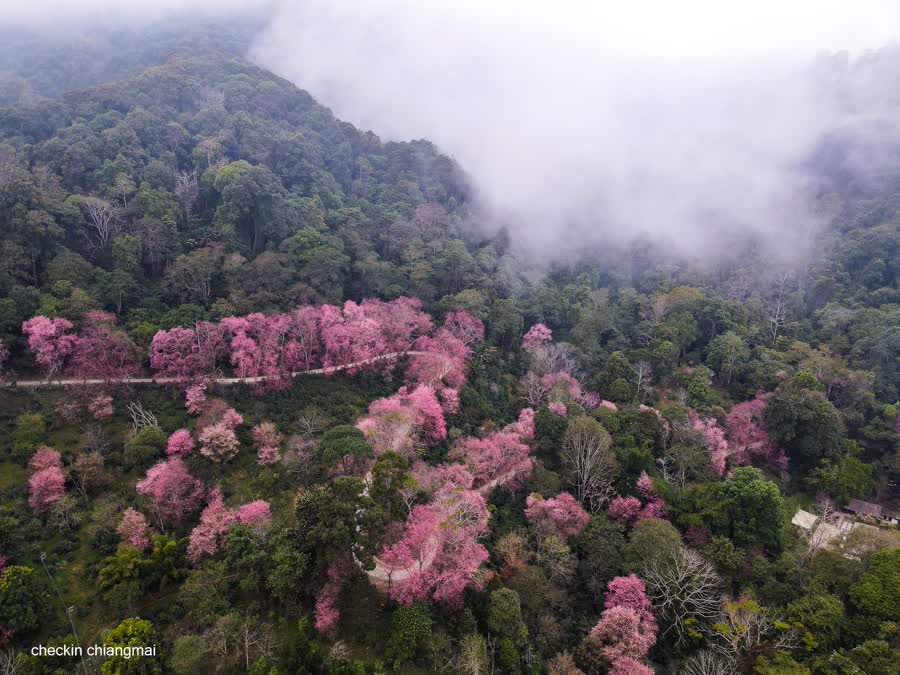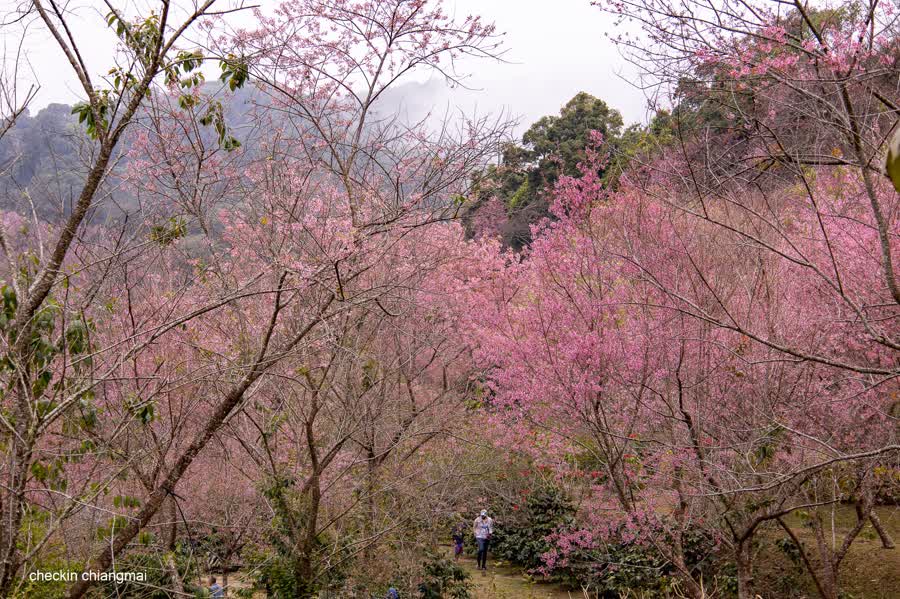
Chiang Mai – In Chiang Mai, COVID-19 hasn’t stopped the beauty of nature coming into bloom, especially at Khun Chang Khian on Doi Pui where wild Himalayan cherry trees are now blossoming beautifully in the cold weather.
Many visitors have been impressed by the wild Himalayan cherry flowers or Thai Sakura flowers, which are blooming in the cold at Khun Changkhian Highland Agricultural Research and Training Station, Doi Suthep-Pui National Park, Mueang Chiang Mai district, Chiang Mai province.

Although the atmosphere is not as lively as in previous years due to the COVID-19 epidemic, people still continue to arrive at Khun Changkhian Highland Agricultural Research and Training Station to admire the beauty of wild Himalayan cherry flowers. Some of them put up tents at the Doi Pui campsite amid the beauty of the wild Himalayan cherry flowers.
Visitors are asked to drive carefully because the path is narrow and steep and there is thick fog on some days. A shuttle service is available for those who are not confident about driving.
On Doi Inthanon, Chom Thong district, the weather is cold especially at the top of the mountain. At Kio Mae Pan viewpoint, the weather is still freezing. Yesterday’s temperature was only two degrees Celsius. There is frost on the grass and trees at many spots on the mountain.

The authorities said today that part of Doi Inthanon National Park is closed especially nature study trails and fewer people are traveling. There were fewer than 200 visitors on January 14. It is expected that the cold weather will persist and it is likely that frost will form on the mountain again because a mass of cold air from China is expected to arrive on January 19. (NNT)





